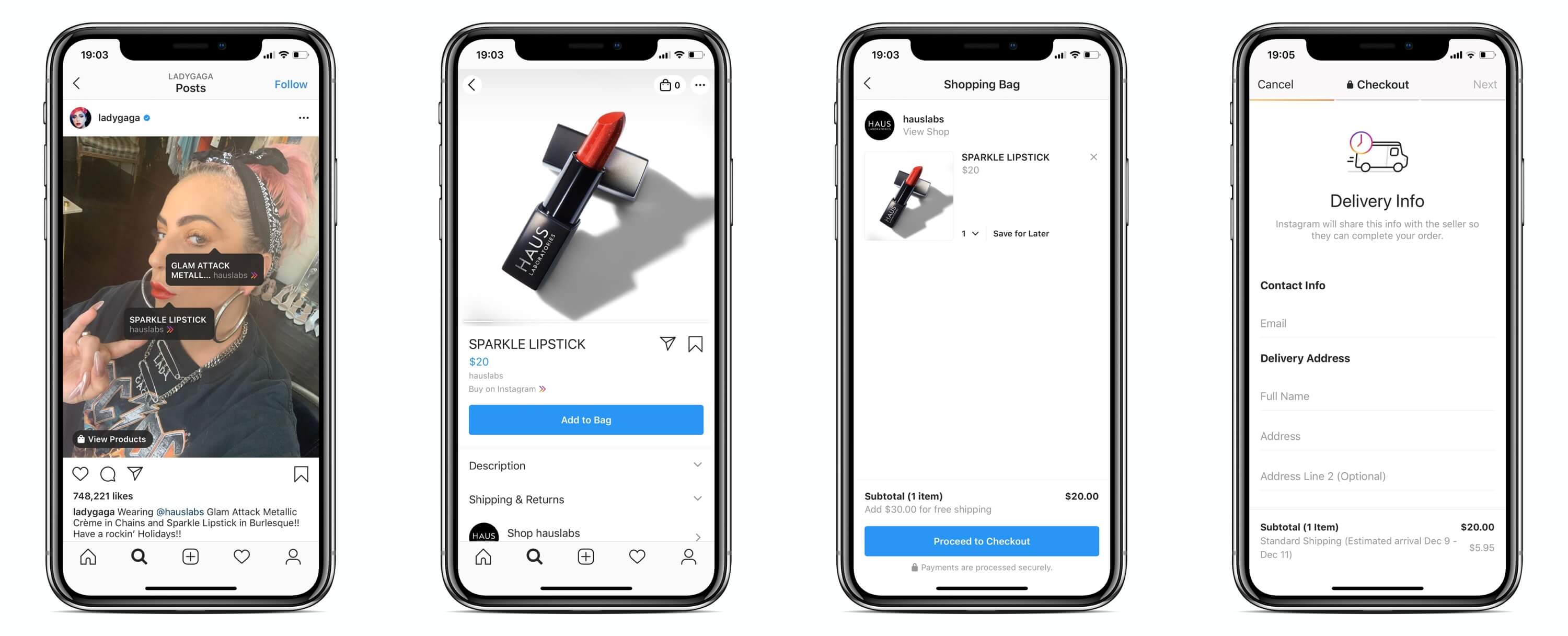While many have tried to combine product discovery and commerce, Instagram is the closest. The app has become the dominant platform for discovery, especially in the clothing and beauty categories. However, the friction of making a purchase after discovering a product on the app has been significant. Instagram is now solving that.
Instagram announced Checkout in March of this year, allowing users to buy without leaving the app. Previously, completing a purchase on Instagram required using a pop-up of the brand’s website as part of Instagram Shopping. In November, the app introduced a “Buy on Instagram” badge differentiating products with Checkout available from the older Instagram Shopping experience. Also, Instagram started accepting applications from qualified US-based brands, after beta testing with a few dozen select brands.
Buying on Instagram now takes four steps: discovering a product through a post or a story, adding the product to cart, proceeding to checkout, and then filling out delivery and payment information. Delivery and payment information is saved after the first purchase, virtually eliminating the last step. All brands using Instagram Checkout benefit from users having used it in the past, as the second and later purchases can be done with a few taps only.

Brands can grant influencers access to the store, making their products shoppable from the influencer’s account in addition to their own. In the example above, Lady Gaga’s post links to the product on her brand’s account. Some brands are asking their network of influencers to do the same, utilizing influencer’s not only for awareness but also to bring the checkout experience closer to the user.
The same red lipstick launched by Lady Gaga last week was also available on Amazon since it is part of the Haus Laboratories brand, the brand the singer launched exclusively on Amazon. Since the brand launched in September, it has produced many best-sellers on Amazon, thanks, in part, to the combined marketing push. The lipstick became #1 best-seller in a day, too, and is available with one-day shipping for Prime members. Checking out on Instagram shows a two-week delivery time, on the other hand.
Amazon is among other major shopping platforms relying on search to generate sales. Amazon is better at logistics than demand generation. Most consumers come with the product in mind; thus, Amazon is optimized to have the most extensive selection at the lowest prices with the fastest shipping to serve that. But shopping is more than that; that “more” is missing from the current state of e-commerce in the US. Twitter, Pinterest, Instagram, and, most recently, TikTok are trying to look for different models.
There are downsides. Instagram keeps most of the data, products have limited descriptions and no reviews, consumers are not encouraged to browse and add more than one product to cart, it increases reliance on the platform, and fees can go up in the future. Most importantly, it works best for already Instagram-experienced and established brands. Producing Instagram content to grow the following, let alone to drive sales, is still a rare skill.
It’s still early, but Instagram is becoming the most exciting shopping platform. It runs the risk of focusing on shopping too much, stepping away from what used to be a photo-sharing app. But it’s been the most critical discovery platform for brands for years and has played a significant part in the boom of Direct-to-Consumer (DTC) brands. Solving the checkout experience completes the experience, increasing conversions for brands, allowing influencers to drive direct sales, and making it drastically more straightforward for users to shop.

